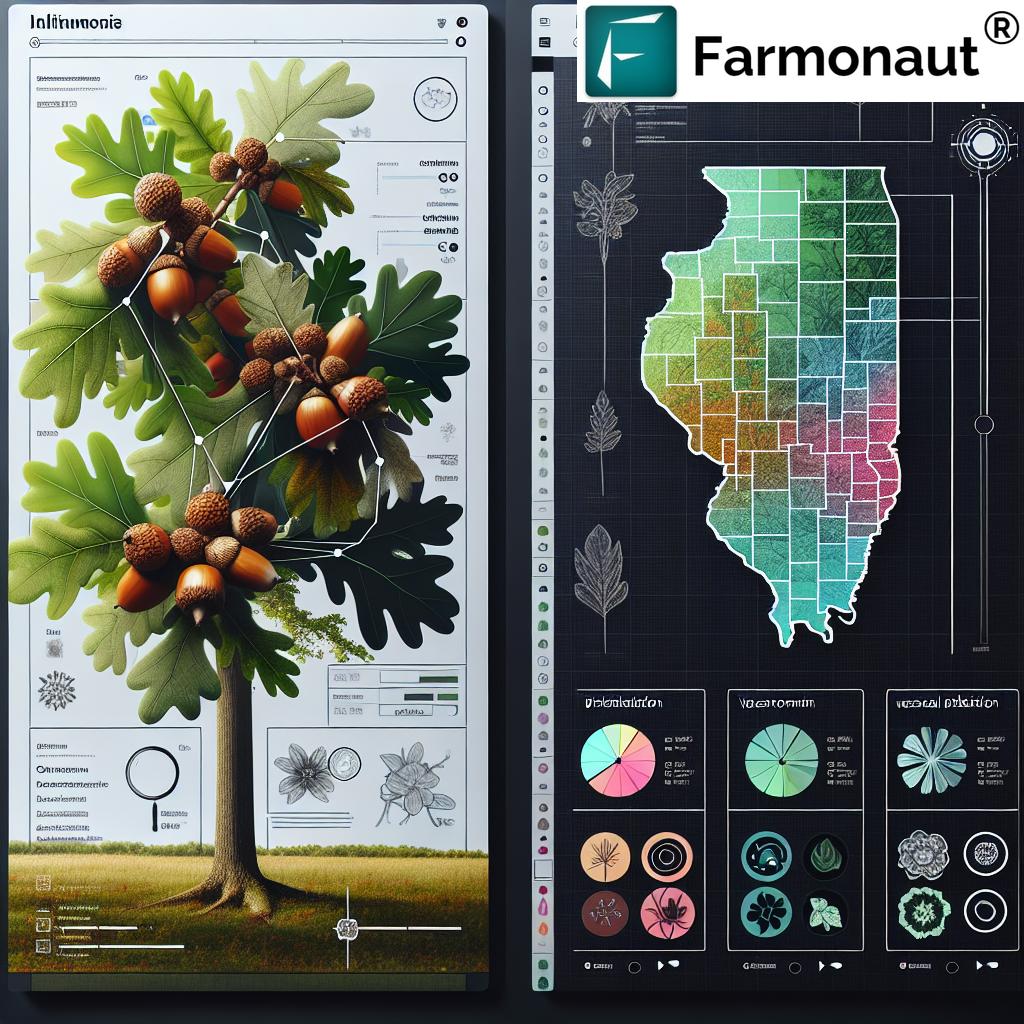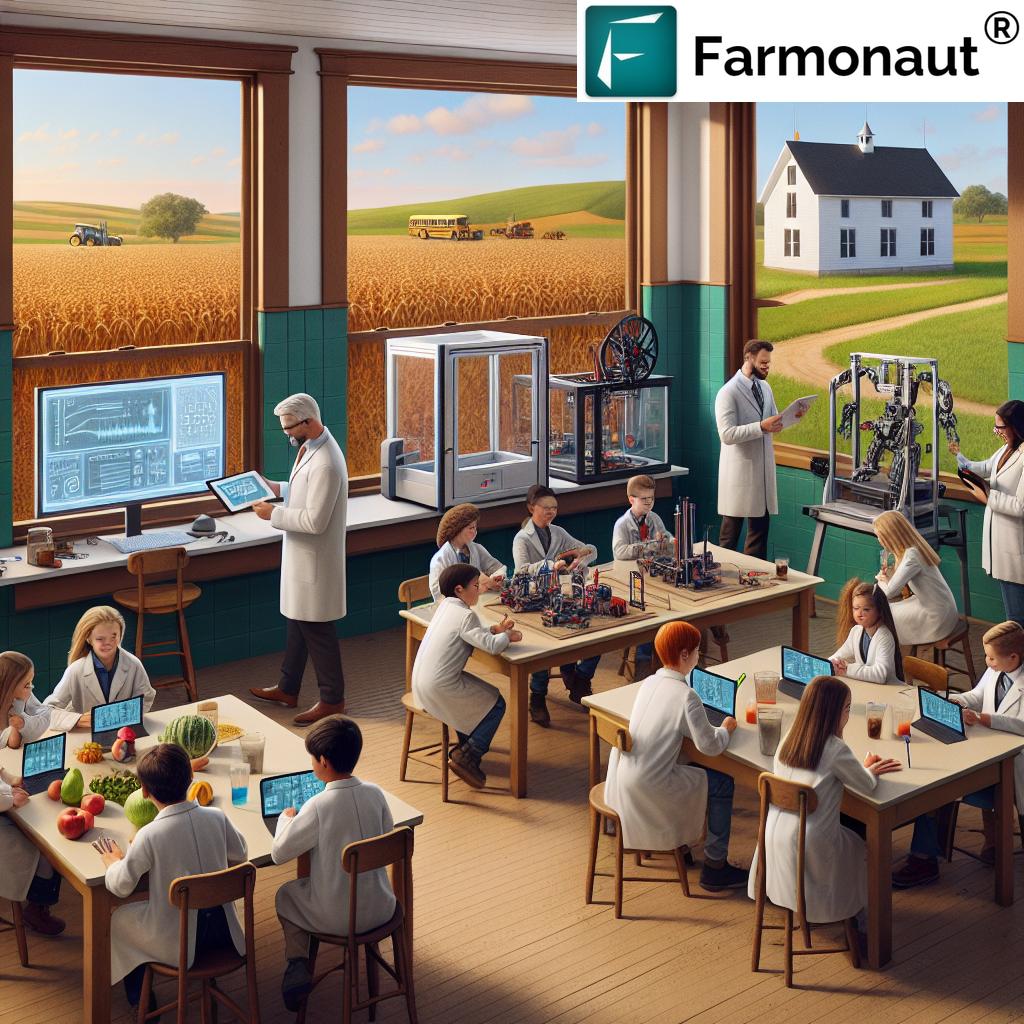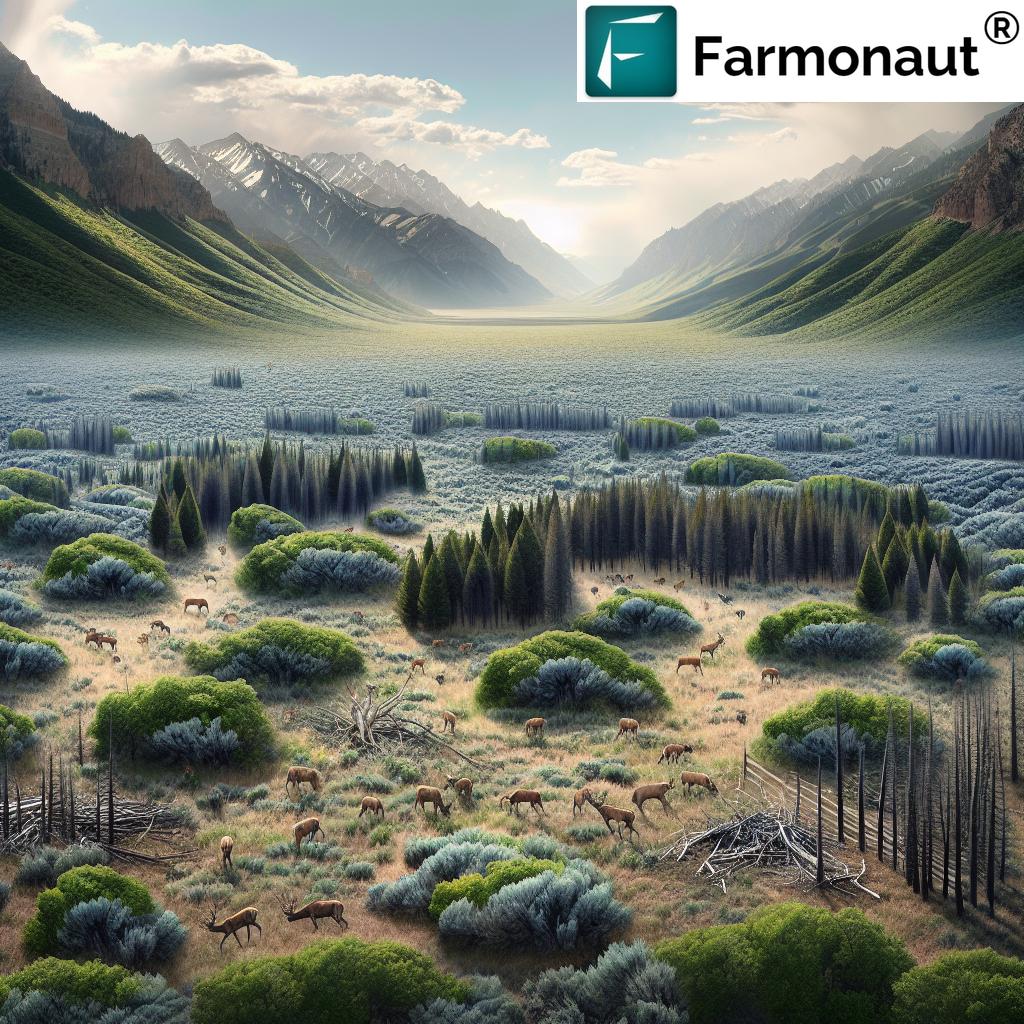Discover Illinois’ Native Flora: A Digital Guide to Plant Identification and Conservation
“Illinois is home to over 2,200 native vascular plant species, including diverse prairie grasses and woody vines.”
Welcome to our comprehensive guide on exploring the rich biodiversity of Illinois’ native flora through digital resources. As we embark on this journey, we’ll uncover the hidden world of plants and wildflowers that grace the landscapes of the Prairie State and beyond. Our goal is to provide you with a treasure trove of information and tools to deepen your understanding of local flora and fauna, while also contributing to vital conservation efforts.
In this digital age, the wealth of online botany tools and resources at our fingertips is truly remarkable. From vast databases of vascular plant species to user-friendly mobile apps, we’ll explore a wide array of platforms that cater to plant enthusiasts, researchers, and conservationists alike. Whether you’re interested in identifying that mysterious wildflower in your backyard or diving deep into the ecosystem dynamics of North America’s tallgrass prairies, this guide has something for everyone.

The Importance of Native Plant Identification
Understanding and identifying native plants is crucial for several reasons:
- Conservation: Identifying native species helps in preserving local ecosystems and biodiversity.
- Ecosystem Health: Native plants play vital roles in supporting local wildlife and maintaining ecological balance.
- Sustainable Landscaping: Using native plants in gardens promotes water conservation and reduces the need for pesticides.
- Scientific Research: Accurate plant identification is fundamental to botanical studies and ecological research.
With the advent of digital tools, native plant identification has become more accessible than ever. Let’s explore some of the best online resources available for Illinois wildflowers and beyond.
Top Online Resources for Illinois Native Plant Identification
| Resource Name | Type | Key Features | Best For |
|---|---|---|---|
| Illinois Wildflowers Database | Website | Comprehensive species list, detailed descriptions, high-quality photos | Beginners, Gardeners |
| iNaturalist | App/Website | Community-driven identification, AI-assisted recognition | Citizen Scientists, Casual Observers |
| USDA PLANTS Database | Database | Extensive species information, distribution maps, scientific data | Researchers, Conservationists |
| Illinois Natural History Survey Digital Herbarium | Digital Collection | High-resolution specimen images, historical records | Botanists, Historians |
| Seek by iNaturalist | Mobile App | Real-time species identification, gamified learning experience | Families, Educators |
These resources provide a solid foundation for anyone looking to explore Illinois’ native flora. From beginners to seasoned researchers, there’s a tool suited for every level of expertise.
Exploring Vascular Plant Species in Illinois
Illinois boasts a diverse array of vascular plants, including trees, shrubs, grasses, sedges, and wildflowers. The state’s varied habitats, from tallgrass prairies to deciduous forests, support a rich tapestry of plant life. Let’s delve into some key categories:
- Prairie Grasses: Species like big bluestem and Indian grass are iconic to Illinois’ prairies.
- Woody Vines: Virginia creeper and American bittersweet add vertical diversity to forests.
- Sedges: These grass-like plants play crucial roles in wetland ecosystems.
- Wildflowers: From spring ephemerals to late-summer blooms, Illinois’ wildflowers are diverse and beautiful.
Understanding these plant groups is essential for conservation efforts and ecosystem management. Digital resources like the USDA PLANTS Database provide detailed information on the distribution, habitat preferences, and ecological roles of these species.
Plant-Insect Interactions: A Fascinating World
The relationship between plants and insects is a cornerstone of ecosystem dynamics. In Illinois, as in many parts of North America, these interactions shape the natural world in profound ways. Here are some key aspects to consider:
- Pollination: Many Illinois wildflowers rely on specific insect pollinators for reproduction.
- Herbivory: Insects like grasshoppers play important roles in regulating plant populations.
- Symbiosis: Some plants and insects have evolved mutually beneficial relationships.
- Pest Management: Understanding plant-insect interactions is crucial for sustainable agriculture.
Digital resources that focus on these interactions can provide valuable insights for both researchers and enthusiasts. For instance, the Illinois Natural History Survey offers databases that document plant-insect relationships observed in the state.

Digital Herbarium Collections: A Window to the Past and Present
“Digital herbarium collections in the US contain over 60 million plant specimens, offering vast resources for botanical research.”
Digital herbarium collections are revolutionizing the way we study and understand plant biodiversity. These online repositories offer high-resolution images of pressed plant specimens, along with valuable metadata about collection dates, locations, and ecological context. For Illinois and the broader United States, these collections are invaluable resources for several reasons:
- Historical Context: They provide insights into how plant distributions have changed over time.
- Taxonomic Research: Digital specimens aid in the study of plant classification and evolution.
- Conservation Planning: Historical records help in identifying areas of high botanical importance.
- Education: These collections serve as excellent teaching tools for botany students.
The Illinois Natural History Survey Digital Herbarium is a prime example of such a resource, offering a wealth of information about the state’s flora. Researchers and plant enthusiasts can access specimens collected over centuries, providing a unique perspective on Illinois’ botanical heritage.
Ecosystem Dynamics in Tallgrass Prairies
The tallgrass prairies of North America, including those in Illinois, are complex ecosystems with fascinating dynamics. Understanding these systems is crucial for conservation efforts and ecological research. Here are some key aspects of prairie ecosystem dynamics:
- Plant Diversity: Prairies host a wide variety of grasses, forbs, and shrubs.
- Fire Ecology: Many prairie plants are adapted to periodic fires, which help maintain the ecosystem.
- Soil Health: Prairie plants contribute to rich, deep soils through their extensive root systems.
- Wildlife Habitat: These ecosystems support diverse animal species, from insects to large mammals.
Digital tools and databases play a crucial role in studying and managing these ecosystems. For instance, the USDA’s Silvics of North America database provides detailed information on the ecology of woody prairie species.
Leveraging Technology for Plant Biology Research
The field of plant biology has been transformed by digital technologies. Researchers now have access to powerful tools that enhance their ability to study, analyze, and understand plant life. Here are some ways technology is advancing plant biology research:
- Genomic Databases: Online repositories of plant genetic information aid in evolutionary studies.
- Remote Sensing: Satellite imagery helps track large-scale changes in vegetation patterns.
- AI and Machine Learning: These technologies are improving plant identification and prediction models.
- Citizen Science Platforms: Apps like iNaturalist enable widespread data collection on plant distributions.
One innovative company making strides in this area is Farmonaut. Their satellite-based crop health monitoring system provides valuable insights for agricultural research and management. While primarily focused on crop health, their technology has potential applications in broader plant biology studies.
You can explore Farmonaut’s offerings through their web application, Android app, or iOS app. For developers interested in integrating satellite data into their own projects, Farmonaut also offers an API with comprehensive documentation.
Conservation Resources for Prairie Ecosystems
Preserving Illinois’ native prairies and their unique plant communities is a critical conservation priority. Fortunately, there are numerous digital resources available to support these efforts:
- Prairie State Conservation Coalition: Offers an online database of protected lands and conservation initiatives.
- Illinois Department of Natural Resources: Provides digital guides on prairie management and restoration.
- The Nature Conservancy’s Illinois Chapter: Features interactive maps of conservation projects and volunteer opportunities.
- Chicago Botanic Garden: Offers online courses and resources on native plant conservation.
These resources empower conservationists, land managers, and volunteers with the knowledge and tools needed to protect and restore Illinois’ prairie ecosystems.
Vascular Plant Species Mapping
Understanding the distribution of plant species is crucial for conservation planning and ecological research. Digital mapping tools have revolutionized how we visualize and analyze plant distributions. Here are some key resources for vascular plant species mapping:
- BONAP’s North American Plant Atlas: Provides county-level distribution maps for vascular plants across North America.
- USGS Biodiversity Information Serving Our Nation (BISON): Offers interactive maps of species occurrences based on various data sources.
- NatureServe Explorer: Provides detailed range maps and conservation status information for plant species.
These mapping tools allow researchers and conservationists to identify areas of high botanical diversity, track changes in species ranges, and plan targeted conservation efforts.
Exploring Beyond Illinois: Regional Plant Databases
While our focus has been on Illinois, it’s important to consider the broader context of plant life in the surrounding regions. Many plant species found in Illinois also occur in neighboring states and beyond. Here are some valuable regional plant databases:
- Midwest Plant Atlas: Covers the flora of the Midwestern United States, including Illinois, Ohio, and surrounding states.
- Flora of North America: A comprehensive database of plant species across the continent.
- Digital Atlas of the Virginia Flora: While focused on Virginia, this resource is useful for comparing eastern deciduous forest species.
- Great Plains Flora Association: Provides information on plants of the western prairie regions.
These regional databases offer a broader perspective on plant distributions and ecological relationships, enhancing our understanding of Illinois’ flora in a wider geographical context.
The Role of Citizen Science in Plant Research
Citizen science has become an invaluable tool in botanical research and conservation. By engaging the public in data collection and observation, scientists can gather vast amounts of information about plant distributions, phenology, and ecological interactions. Here are some ways citizen science is contributing to plant research:
- iNaturalist: This platform allows users to upload plant observations, which are then verified by experts.
- Project BudBurst: Focuses on tracking plant phenology (timing of life cycle events) across the country.
- eBird: While primarily for bird observations, this platform also collects valuable data on plant-bird interactions.
- USA National Phenology Network: Engages citizens in tracking seasonal changes in plants and animals.
These citizen science initiatives not only contribute valuable data to scientific research but also help raise public awareness about local flora and conservation issues.
Incorporating Native Plants in Urban Landscapes
As urbanization continues to expand, incorporating native plants into city landscapes becomes increasingly important. This practice, known as urban native landscaping, offers numerous benefits:
- Supports local wildlife, including pollinators
- Reduces water consumption and maintenance needs
- Enhances urban biodiversity
- Connects city dwellers with their natural heritage
Digital resources can play a crucial role in promoting and facilitating urban native landscaping:
- Native Plant Finder (National Wildlife Federation): Helps users find native plants suitable for their specific location.
- Lady Bird Johnson Wildflower Center Database: Offers extensive information on native plants for landscaping.
- Illinois Wildflowers: Provides detailed information on native species suitable for garden settings.
These tools empower homeowners, landscape architects, and city planners to make informed decisions about incorporating native plants into urban environments.
The Future of Digital Botany Tools
As technology continues to advance, we can expect even more powerful and user-friendly digital tools for plant identification, research, and conservation. Some emerging trends include:
- Augmented Reality (AR) Plant Identification: Using smartphone cameras to instantly identify and provide information about plants in real-time.
- AI-Powered Ecological Modeling: Advanced algorithms to predict plant responses to climate change and other environmental factors.
- Blockchain for Plant Provenance: Using blockchain technology to track the origin and movement of plant specimens and seeds.
- Virtual Reality (VR) Botanical Gardens: Immersive experiences allowing users to explore diverse plant habitats from anywhere in the world.
These innovations promise to make botanical knowledge more accessible and engaging for both researchers and the general public.
Conclusion: Embracing Digital Tools for Plant Conservation
As we’ve explored throughout this guide, the digital revolution has opened up exciting new avenues for plant identification, research, and conservation. From comprehensive databases of Illinois wildflowers to cutting-edge satellite monitoring systems like those offered by Farmonaut, these tools are empowering botanists, conservationists, and nature enthusiasts alike.
By leveraging these digital resources, we can deepen our understanding of Illinois’ native flora, track changes in plant distributions, and make informed decisions about conservation and land management. Moreover, these tools allow us to connect with the natural world in new and meaningful ways, fostering a greater appreciation for the plant life that surrounds us.
As we look to the future, it’s clear that digital botany tools will play an increasingly important role in our efforts to preserve and protect the rich biodiversity of Illinois and beyond. By combining traditional botanical knowledge with innovative technologies, we can work towards a future where our planet’s plant life thrives for generations to come.
FAQ Section
Q: What are some common native plants in Illinois?
A: Some common native plants in Illinois include big bluestem grass, purple coneflower, butterfly weed, and black-eyed Susan.
Q: How can I identify plants using digital tools?
A: You can use mobile apps like iNaturalist or PlantSnap, or consult online databases like the USDA PLANTS Database or Illinois Wildflowers website.
Q: Why is it important to use native plants in landscaping?
A: Native plants are adapted to local conditions, require less water and maintenance, and provide essential habitat for local wildlife.
Q: How can I contribute to plant conservation efforts in Illinois?
A: You can participate in citizen science projects, volunteer for local conservation organizations, or create native plant gardens in your own yard.
Q: What is the difference between native and naturalized plants?
A: Native plants evolved in a specific region over thousands of years, while naturalized plants were introduced from other areas but have established self-sustaining populations.
Remember, the journey of discovering and protecting Illinois’ native flora is an ongoing one. By utilizing the digital resources and tools discussed in this guide, we can all play a part in preserving the natural heritage of the Prairie State and beyond. Happy exploring!














